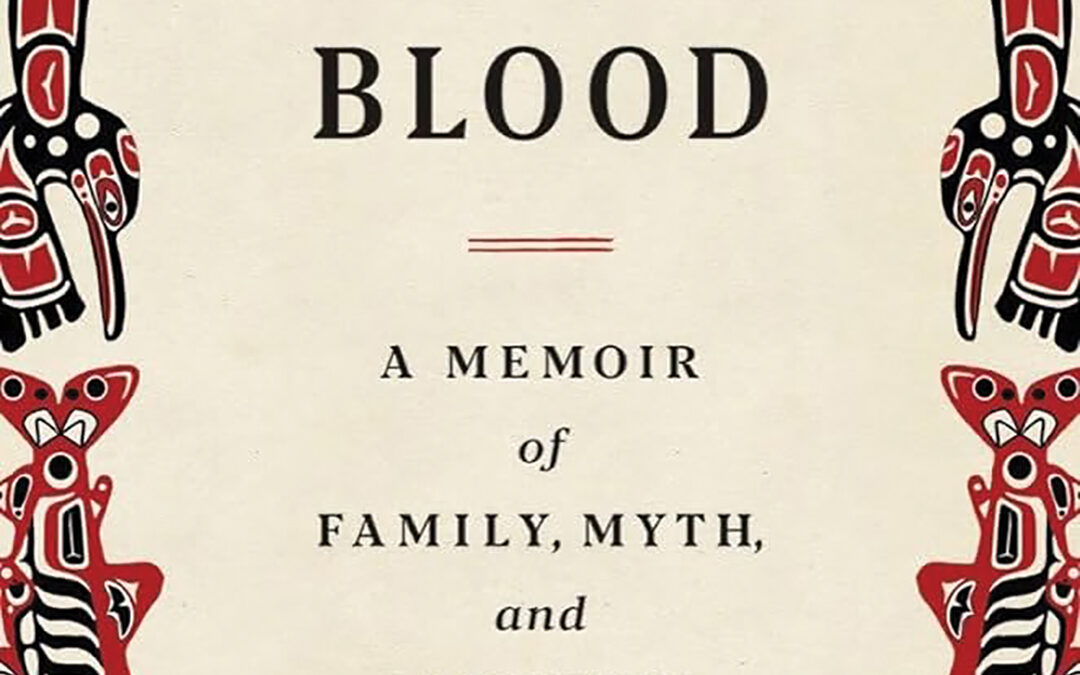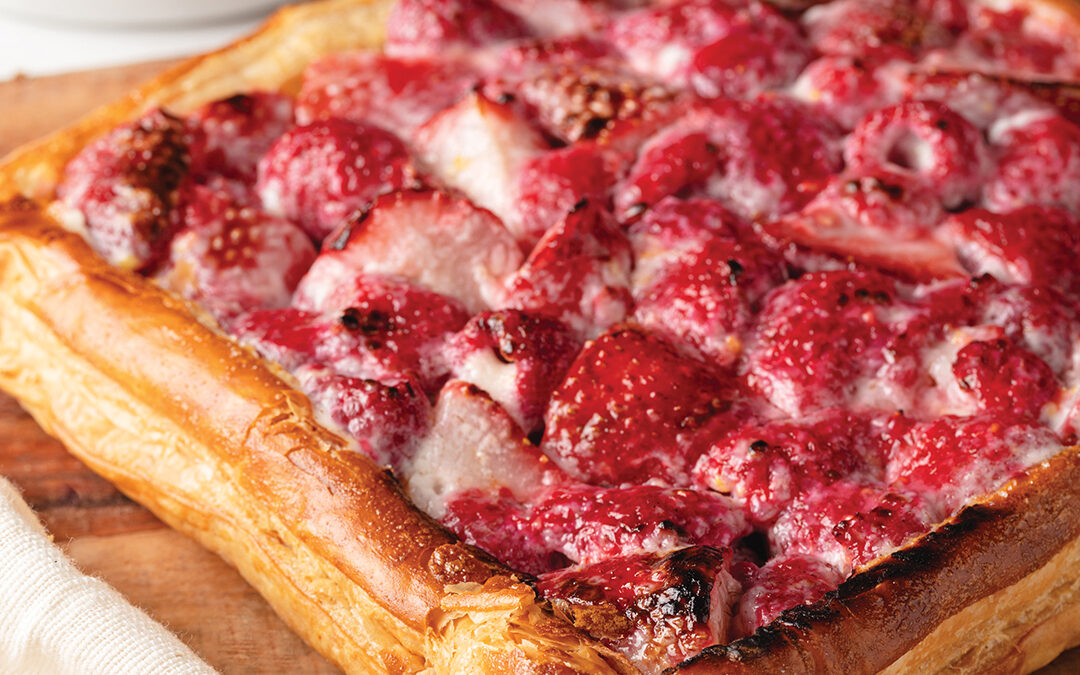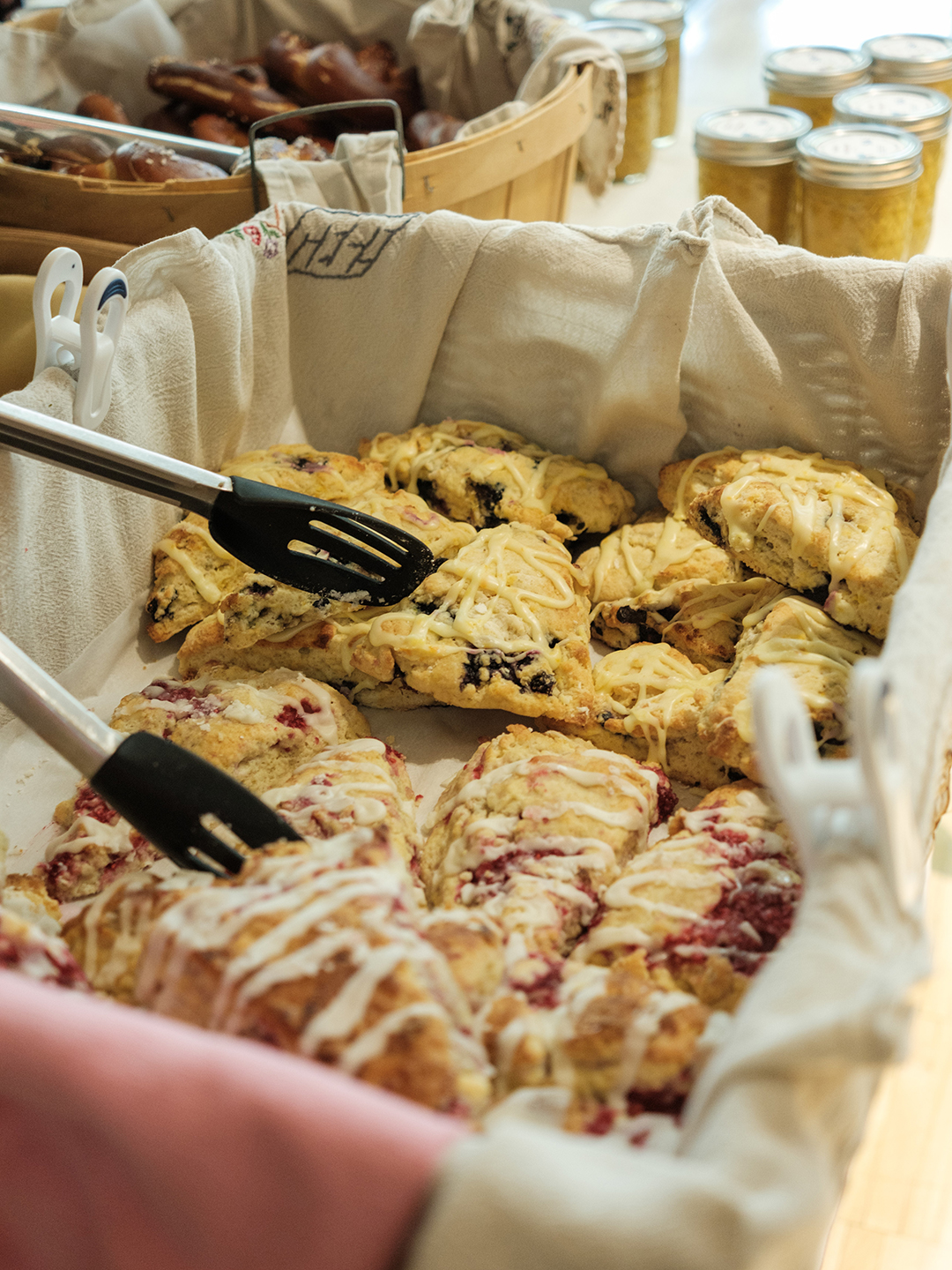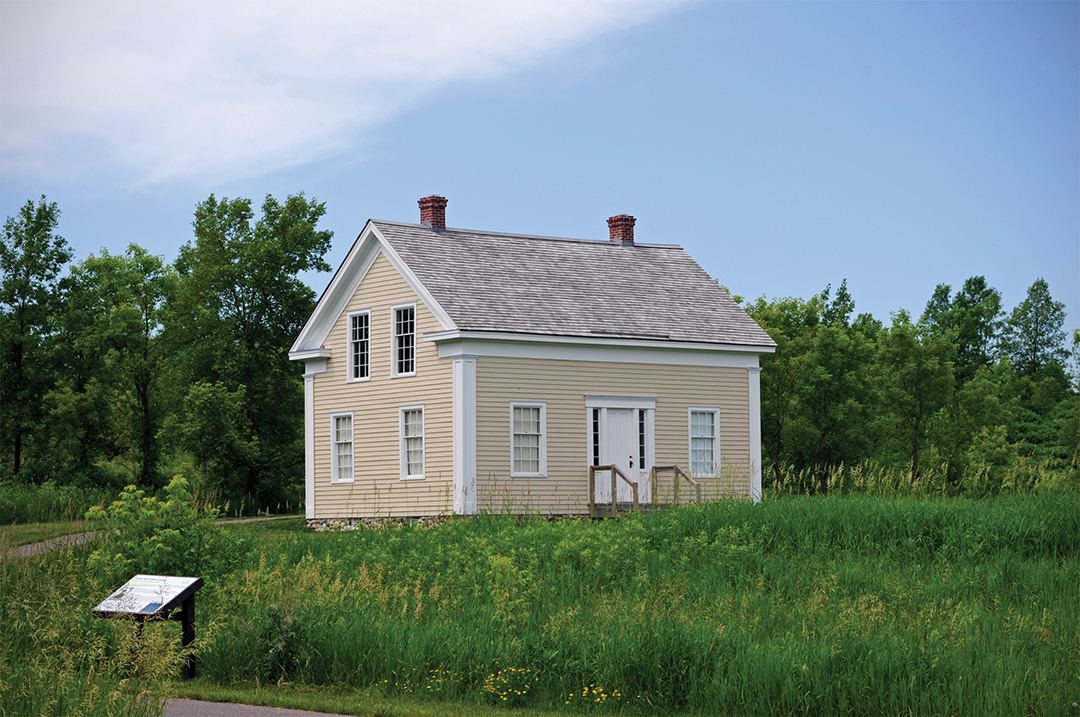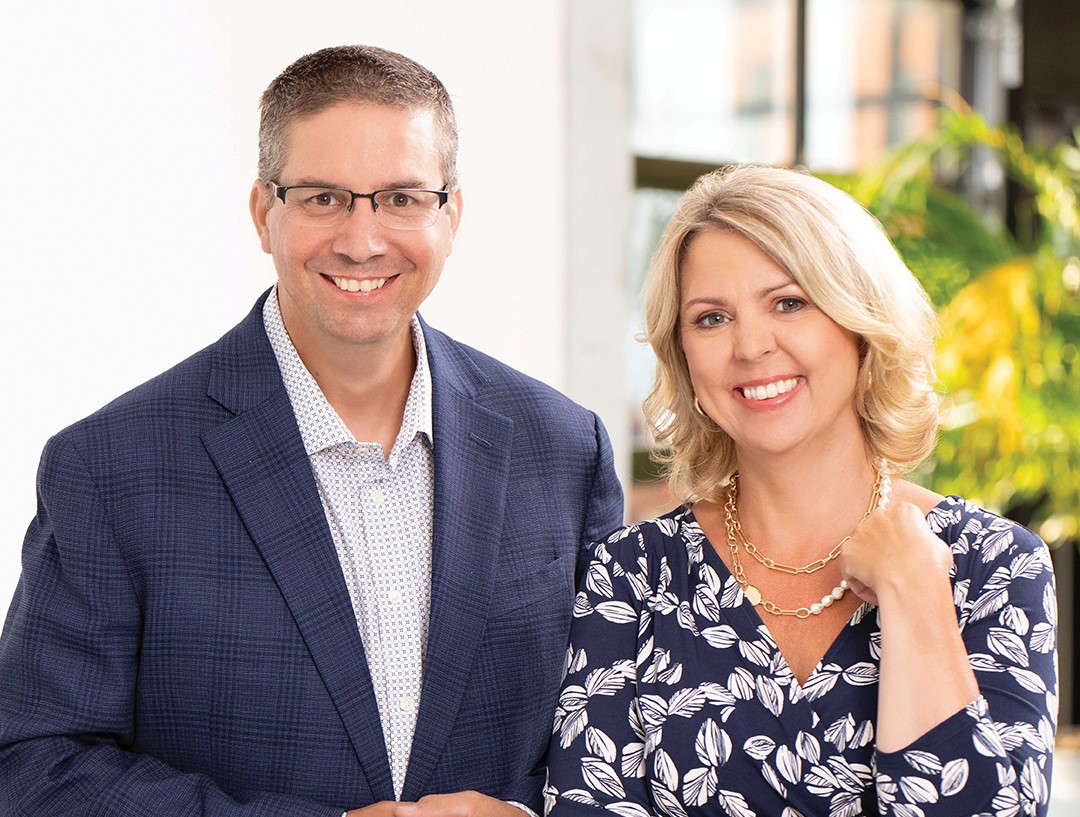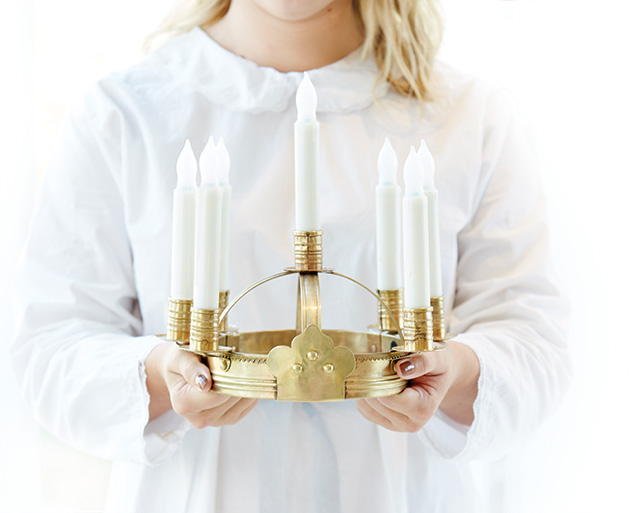
A woman holds a crown of candles for the St. Lucia concert at the American Swedish Institute. Photos: Tate Carlson
Learn how the Twin Cities community celebrates this Swedish folk holiday.
In Minnesota, long summer nights are sacred. We know we’ll miss them when winter rolls around with endless stretches of darkness. With a similar climate, it’s no surprise that Sweden has an annual tradition to help alleviate the toll that a harsh winter can take.
December 13 marks St. Lucia’s Day, a celebration in Swedish folklore of St. Lucia arriving to bring food, light and hope to the world in a time of famine and darkness. The holiday became popular in the late 1900s and, today, is celebrated throughout Swedish communities—from schools to nursing homes.
Closer to home, the American Swedish Institute (ASI) has brought the light of Lucia to the Twin Cities. Each December, they host two Lucia-themed concerts: Lucia in the Mansion and the Lucia Celebration concerts. The Lucia in the Mansion concert, open to members of the institute, is December 13 in the ASI’s home base, the historic Turnblad mansion. “The experience is really rich,” says Britta Wahlstrom, ASI program manager. “It’s a candlelit concert that uses the mansion as a beautiful backdrop.”
The Lucia Celebration concerts are December 14 at Larson Hall in the Nelson Cultural Center, the newer section of the institute, located next to the mansion. Open to the public, the celebration concerts feature the same music and roles but run slightly longer than the mansion version.
The ASI’s choirs, made up of 75 singers, pay homage to Lucia through traditional Swedish and English songs. With participants ranging in age from kindergarten to seniors in high school, the pieces must accommodate a range of skills and patience levels. However, a few selected choristers, typically age 16 and older, perform the roles of Lucia, Lucia’s attendants and star boys and have the opportunity to recite poetry and lead the rest of the choir in procession.
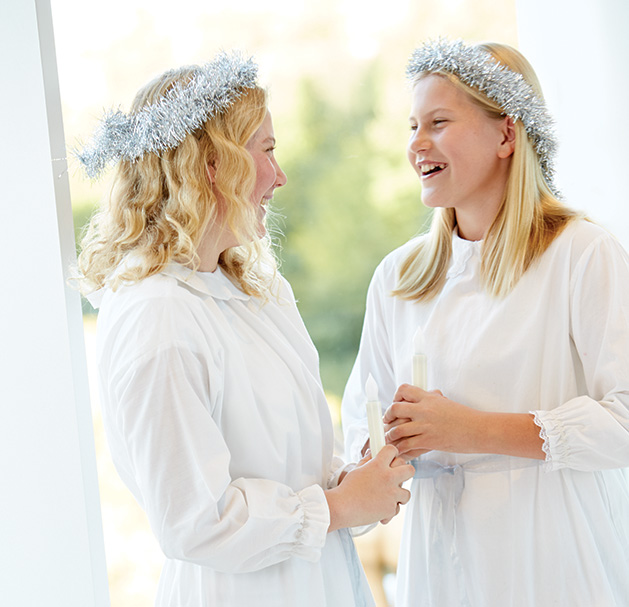
So, how does one get to be Lucia? At the ASI, individuals interested in the roles of Lucia, Lucia’s attendants and the star boys nominate themselves with an essay that demonstrates their interest in Sweden, Swedish-American culture and an understanding of the spirit of Lucia.
Preparations for the celebration begin months in advance as the ASI begins the call for participants in September, first to previous participants and then to new families interested in the event. Rehearsals begin on the first Sunday in November. Each week, the children gather to learn the songs and work on their Swedish pronunciation, while costume preparations are in the works.
Once December arrives, it’s time for the magic to begin. Though she typically listens to the concerts from a connecting room, Wahlstrom savors the feeling of community the celebration brings. “I love seeing all these families come together,” she says. “We work to create a gathering place here at the ASI, and it’s such a fun tradition that people care about continuing. That’s the special thing for me, seeing these families and knowing they are choosing ASI as a place for them.”
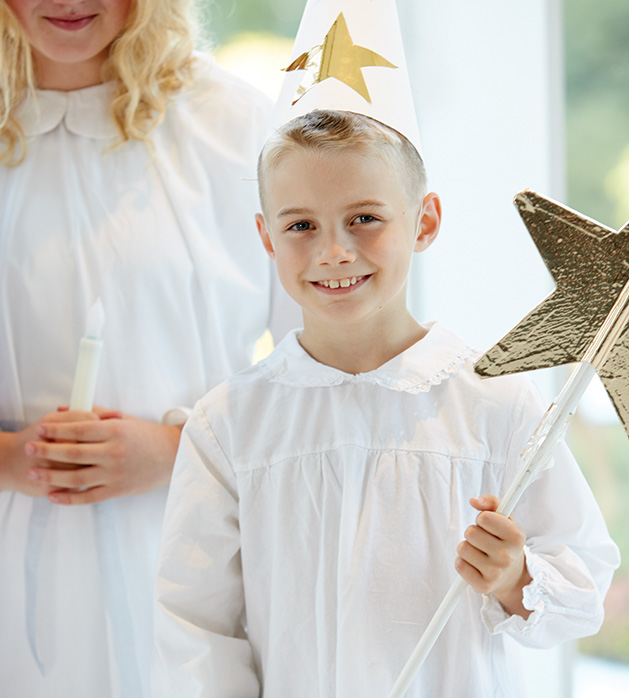
Life with Lucia
Taking part in the Lucia concerts at the American Swedish Institute (ASI) is a yearly tradition for some local families. Whether their interest in the holiday stems from a Swede in the immediate family or an ancestral connection, there is a lot to love about this holiday celebration.
For Plymouth’s Linnea and Sofia Källebo, who are in eighth and sixth grade, respectively, honoring Lucia is an opportunity for them to share their connection to Sweden with their peers. Both girls have celebrated Lucia in their homes with their parents, Alexander and Lisa. They have a leg up in learning the songs, as they both speak Swedish, learned from their father, and it gives them the chance to share pronunciation tips with the rest of the choir.
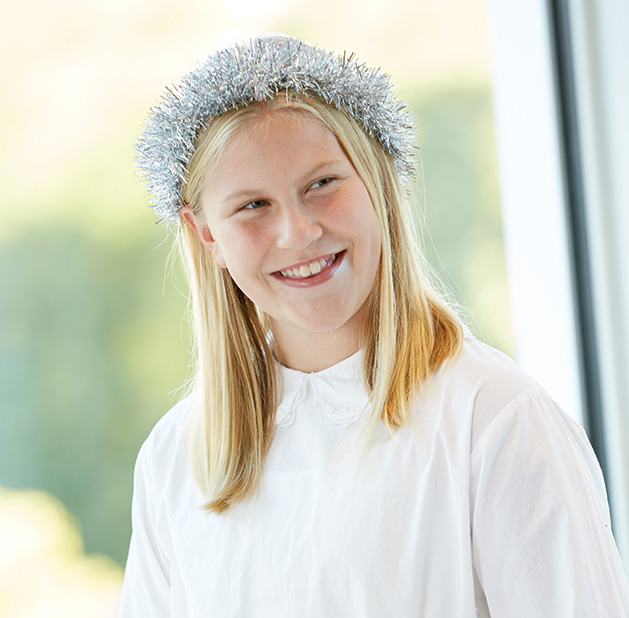
Sofia Källebo
“I was born and raised in Sweden before I came to America,” Alexander says. “Every school had a Lucia when I was growing up, so for me coming here and getting involved with the Swedish institute was an amazing opportunity to connect with the other Swedes and connect with my family.”
Both Källebo girls enjoy the opportunity to learn more about the tradition they celebrate in their homes. “It’s been really cool to learn some of the Swedish songs and learn about how they celebrate in Sweden,” Sofia says. “It’s pretty magical to do the concerts in the mansion with the candles and singing,” Linnea says.
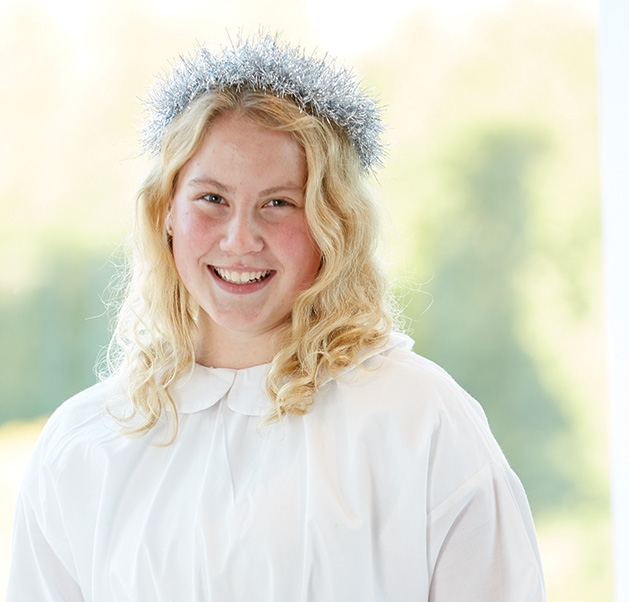
Linnea Källebo
“Lucia is something we celebrate in our home, and I think the concerts have inspired a lot of the families to keep and hold the tradition,” Lisa says. “For our family, Lucia is the kick-off to the holiday season.”
Meet the Cast
Lucia
About: The role of Lucia leads the choir procession and often recites a poem in Swedish.
Costume: A white robe with a red sash and a crown made of candles
Lucia’s attendants
About: Lucia’s attendants hold candles and follow Lucia in the procession.
Costume: White robes with garland crowns
Star boys
About: The star boys follow Lucia and her attendants.
Costume: White robes, stars on sticks and pointy, paper cone hats
Tomtar
About: Christmas elves, clad in red, are frequently played by the younger participants.
Pepparkakor
About: Children, dressed in brown, represent pepparkakor, the traditional Swedish ginger cookie made to celebrate Lucia.
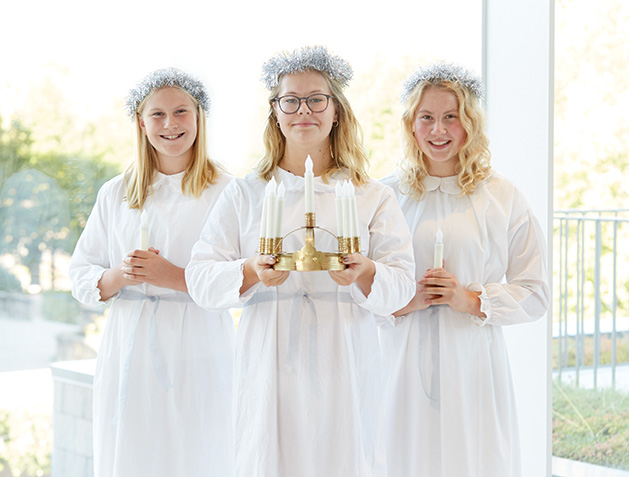
Scholarly Pursuits
The ASI, not only strives to honor Swedish history, it also promotes continued education endeavors of the country and its culture. Rachel Dwyer of Maple Grove received this year’s Lilly Lorénzen Scholarship (in conjunction with the ASI) to supplement her study in Sweden.
ASI notes that the scholarship was established in 1980 by friends, students and relatives of the late Lilly Lorénzen, a Swedish language instructor at the University of Minnesota and the ASI and author of Of Swedish Ways.
Dwyer is pursuing her doctorate in anthropology, focusing on archaeology, at the University of Buffalo, NY. Her plans include collaborating with researchers at the Umeå University in Sweden regarding her approach to detect medicinal plant use from recovered plant remains from the Viking age.
While Dwyer studied Swedish at ASI and Minnesota State University, Mankato, it’s interesting to note that she also studied Swedish through Maple Grove Community Education, another example of the importance of community education.
NOTE: If you’re interested in tasting a bit of Swedish heritage, click here for a recipe for Swedish meatballs, thanks to Eric Hagemann, communications specialist at Osseo Area Schools.
American Swedish Institute
2600 Park Ave., Minneapolis
612.871.4907
Facebook: American Swedish Institute
Instagram: @amswedinstitute
Twitter: @AmSwedInstitute

